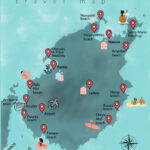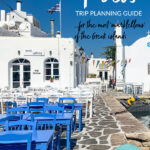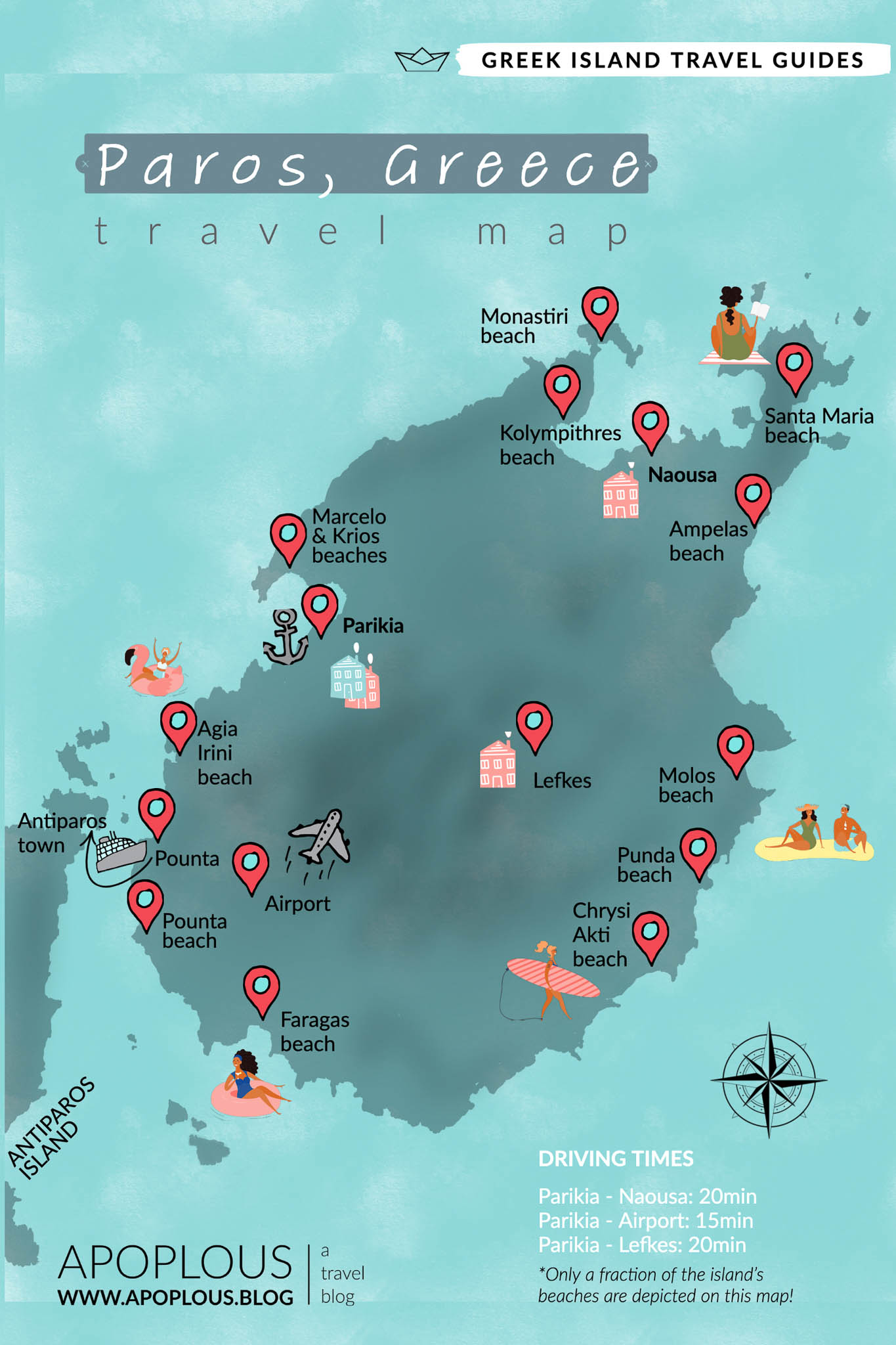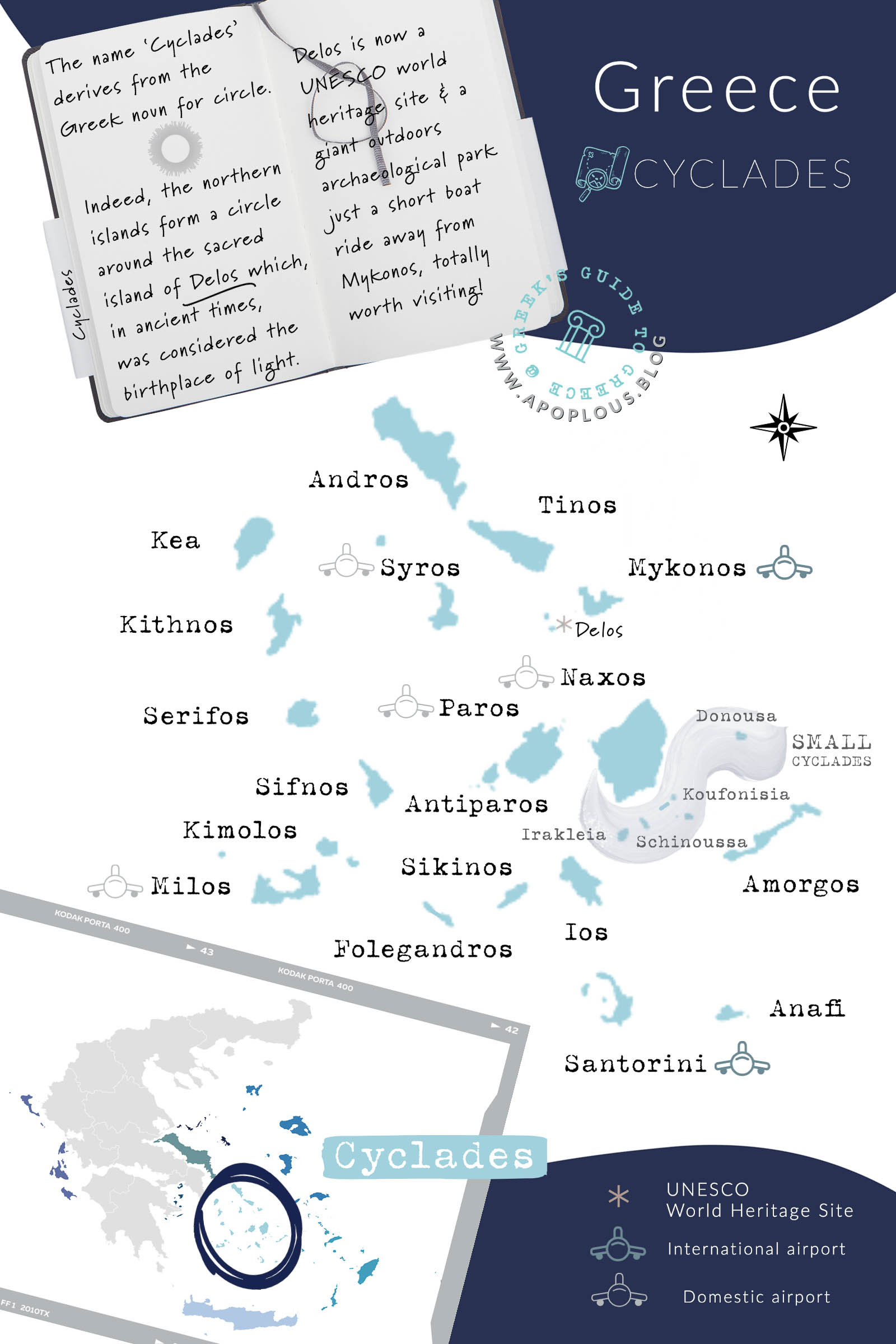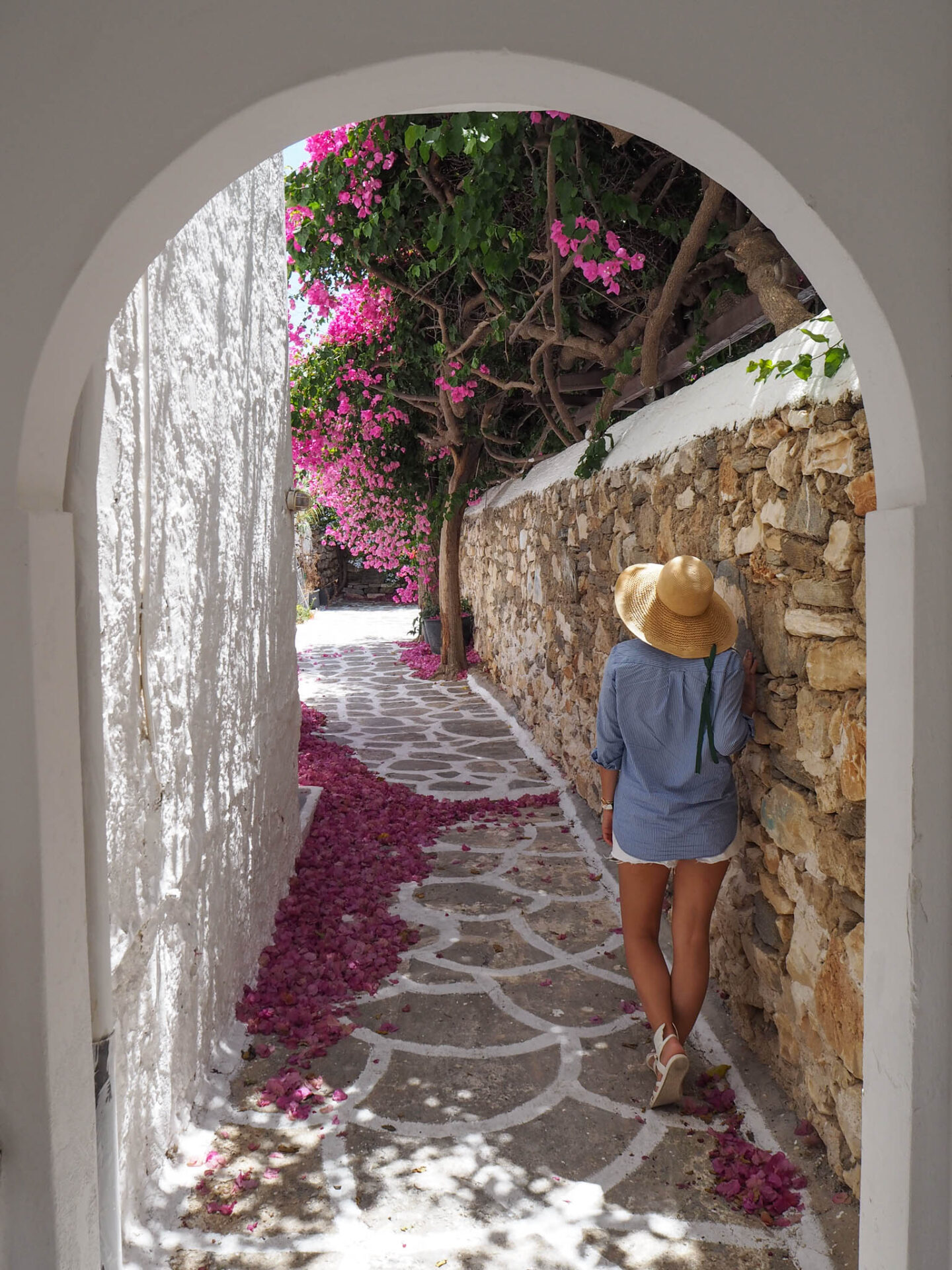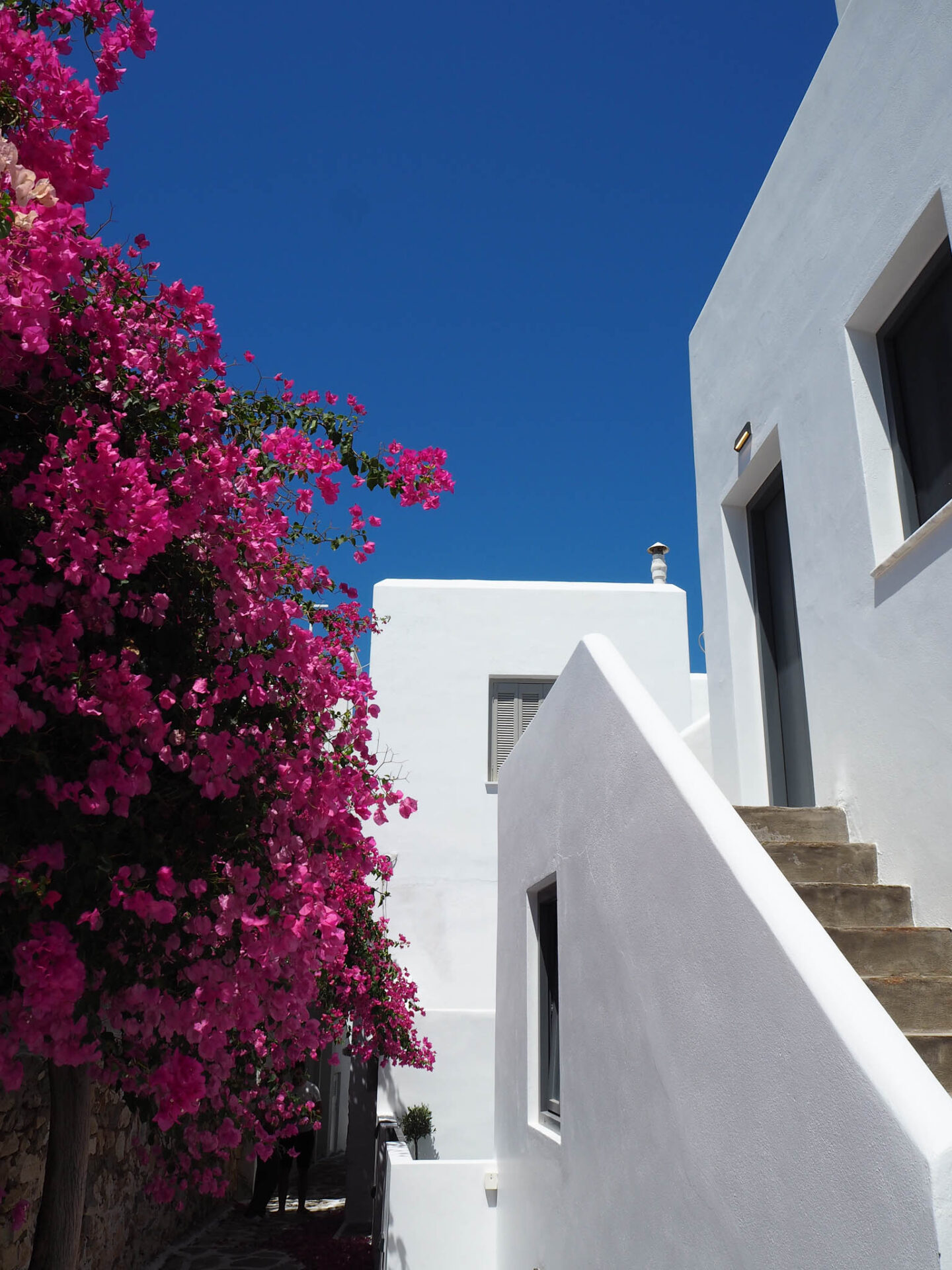A TRAVEL GUIDE TO PAROS ISLAND, GREECE
[PART 1|2]
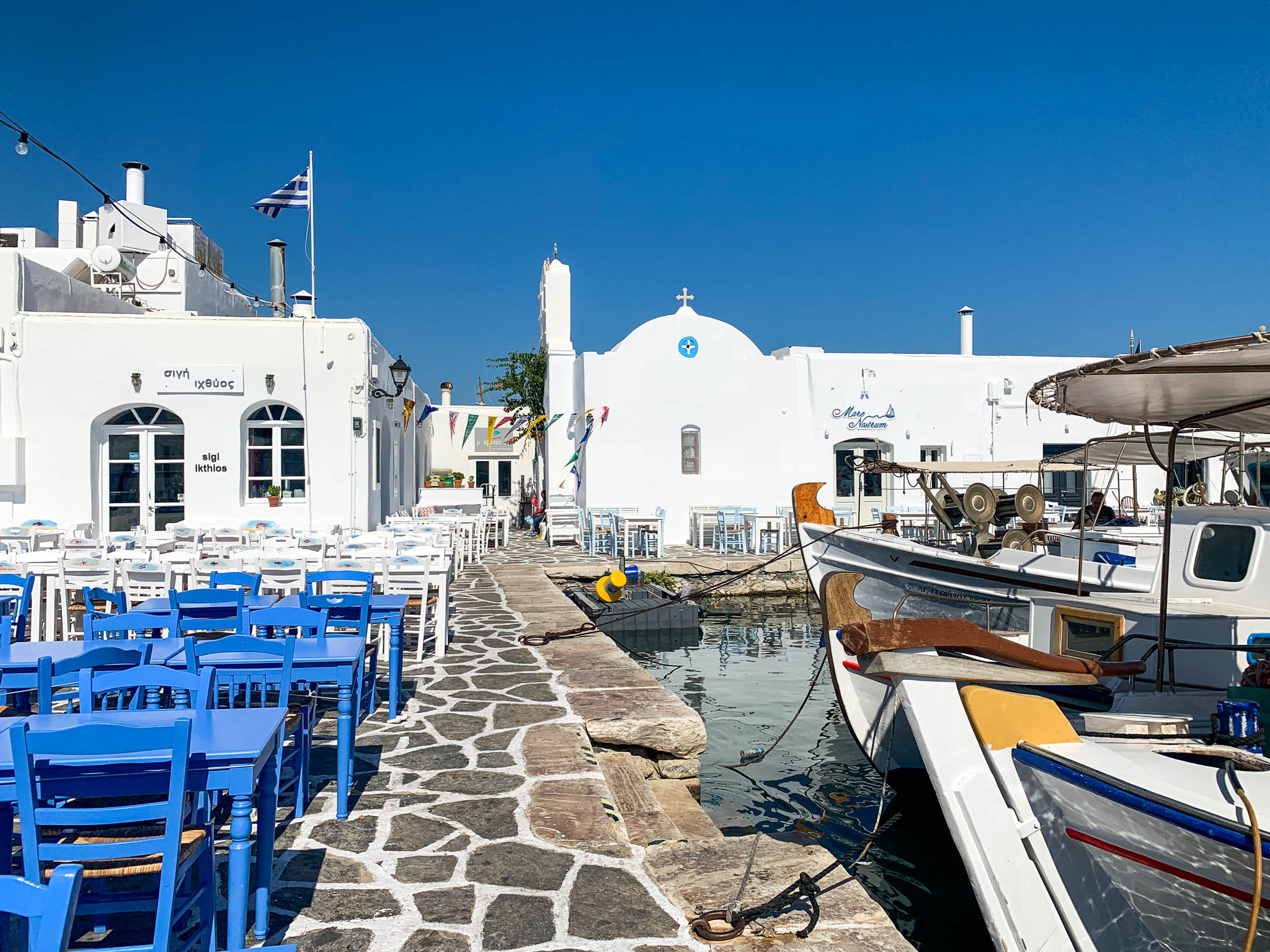
Paros has been an established holiday destination for us, Greeks, for many decades now. The island is a true Cycladic gem boasting two stunning traditional towns, Parikia and Naousa, both with elegant restaurants, quaint tavernas and lively bars and cafés, all next to working fishing boats. Paros is also a beach bum’s heaven with a multitude of large beaches suitable for relaxing, partying and even windsurfing. I should also mention that you can reach the island fairly easily too.
Living in London now, I noticed that everyone knows Santorini or Mykonos; as far as Paros is concerned, it varies. Even though the island is not world famous, those who have visited Greece have either been to Paros or really wanted to go! Indeed, Paros is on the radar of everyone who is thinking or planning of visiting Greece. The secret is out, at least amongst travellers worth their salt. Thinking of visiting Paros? Excellent choice, but, do it now. Don’t delay and, more importantly, don’t tell anyone.
INTRODUCING PAROS
THE BASICS
Paros is located in the Cyclades, the island group in the centre of the Aegean Sea and it is a typical example of what these islands are most famous and revered for. The traditional Cycladic architecture is ever-present, featuring charming sugar cube houses arrayed along narrow cobbled alleys. There are hundreds of colourful caiques bobbing up and down gently in the electric blue water; a testament to the island’s continuous dependance upon the sea to provide. The desert-like summer landscape is softened by colourful explosions of bougainvillea. Bushes of herbs fill the sea air with their subtle aromas. The windswept, sun burnt environment is harsh and generous in equal measure.
Paros’ history* goes back to prehistoric times. Like the whole of Greece, the island is steeped in history in more ways than you can imagine. Paros’ ancient quarries supplied valuable marble for some of the most famous sculptures and structures. In the medieval ages, the islanders engaged in constant fighting with pirates in order to protect their home. WWII was followed by poverty and immigration. In recent times, Paros has been continuously voted amongst the best islands in Europe, even the world.
*Check the slider above for some of Paros’ most interesting facts
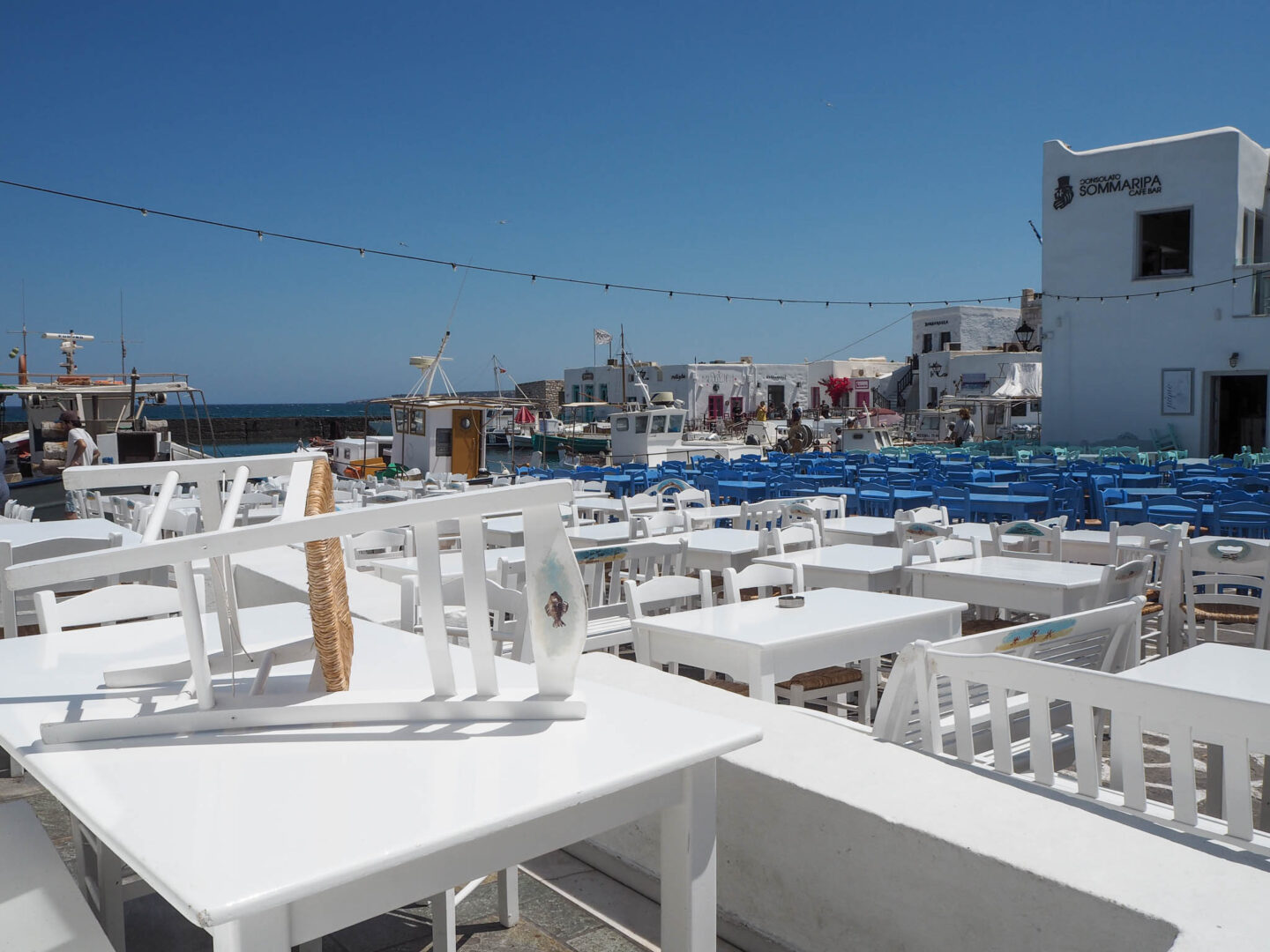
PLACES TO VISIT & THINGS TO DO, IN BRIEF
Parikia and Naousa are the two main towns (or rather, large villages) of Paros located on the east and north coast of the island respectively. There are a few more villages to explore, more notably, Lefkes, a traditional hillside settlement right in the middle of the island. Lefkes is not as well known as Parikia and Naousa but it is definitely worth a visit.
Furthermore, Paros is blessed with a ridiculous amount of sandy beaches with crystal clear waters scattered all around its perimeter. Most of them are organised with sun loungers, umbrellas, beach bars or tavernas near by. However, you will still be able to find a wild beauty with less amenities, and thus, people. Paros is also quite famous in the windsurfing and kitesurfing circles; there are quite a few beaches famous for their ideal conditions.
Lastly, there are plenty of things to do in Paros. You can spend the day on the beach, explore traditional villages, go hiking, horse-riding, wine tasting, sailing, shopping, and, of course, drinking and dining till as late as you wish!
WHO IS PAROS BEST SUITED FOR?
I am Greek, and for us, Paros has always been a classic summer destination. Growing up, having a summer home there was not a sign of significant wealth, like it was with Mykonos. In fact, even though many families visited Paros, a summer trip to the island was a must for when you graduated from school or during university. That was the reason why I first visited the island, many many years ago!
Given the amount and type of international travellers I have seen in Paros in the last few summers, COVID be damned, Paros is in fact stealing Mykonos’ limelight. Luxury boutique hotels and expensive restaurants are easy to find; sun loungers are fully booked and dearly paid for in a fair few of the beach bars. Yet, just a stone’s throw away from the lobster displays of Barbarossa, the creperies and souvlaki joints of Naousa are filled with 18 year old Greeks paying homage, as yours truly once did, to the great tradition of summer break*. Despite its success, Paros still retains some of its carefree, youthful soul.
All in all, Paros caters for a variety of travellers, in terms of age, interests and budget. We saw young professionals, families with young and older children, students and multi-generational groups. One can choose fine dining and luxury accommodation or more affordable options, and as I mentioned previously, due to the amount of activities available, one can enjoy a relaxed or fun-fuelled trip.
*Seeing that some things never change made me feel very happy… while eating lobster pasta in Barbarossa. For better or worse, I am not 18 anymore!
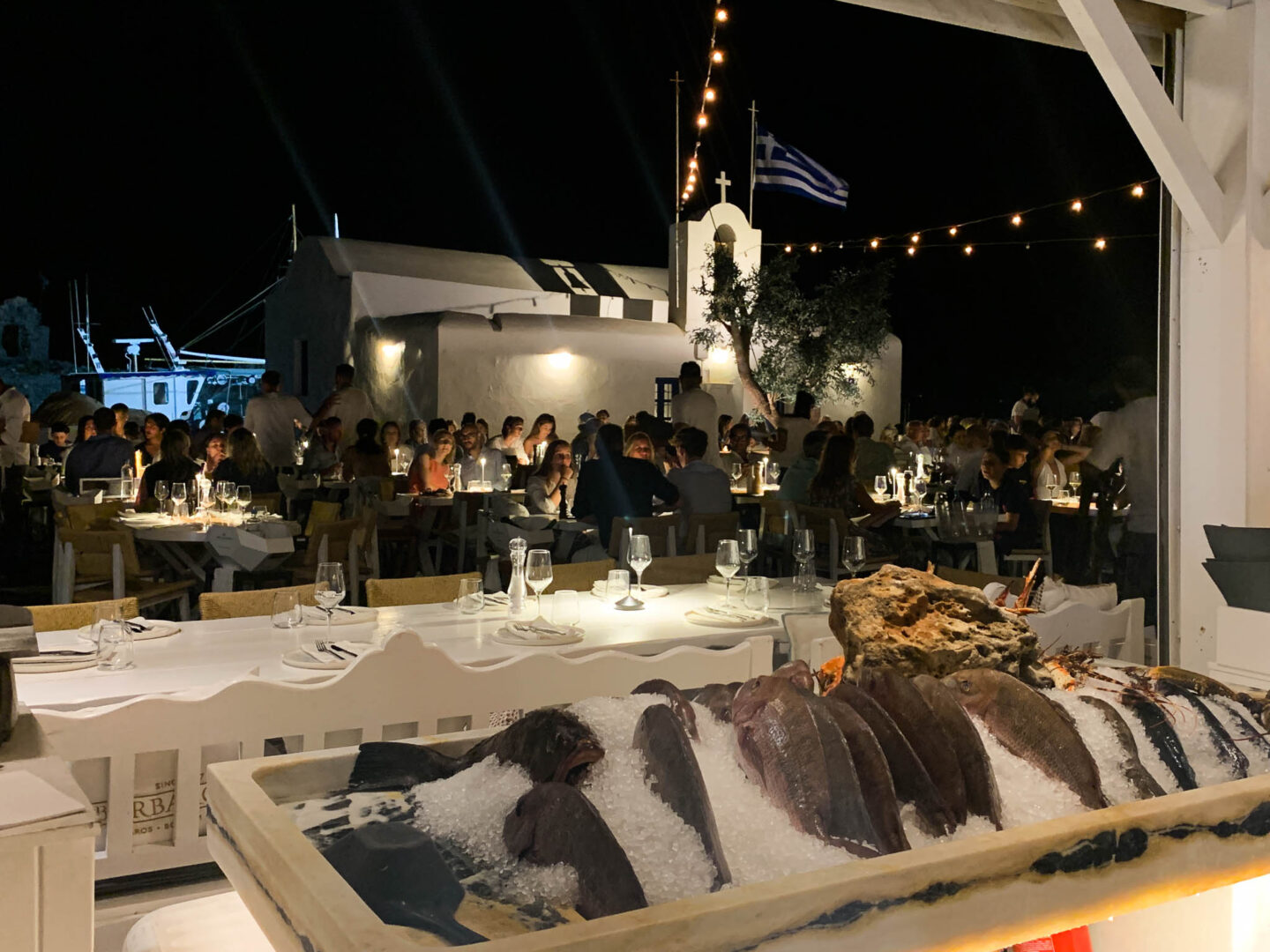
ABOUT PARIKIA, NAOUSA & CHOOSING WHERE TO STAY IN PAROS
PARIKIA
Parikia is the capital of the island. It is located on the east coast and it is its biggest town, though not that big; you can see the whole of Parikia completely on foot. This is also Paros’ main port; if you are arriving by ferry, you will arrive in Parikia*. There you will find plenty of restaurants, cafés and bars as well as accommodation options. Due its location, Parikia makes for an excellent base for exploring the whole island, including neighbouring Antiparos island.
*The only exception to this is if you are travelling from neighbouring Antiparos which is connected to both Parikia and, more frequently, the small port of Pounta.
NAOUSA
The seaside village of Naousa is located on the north side of the island. Despite its location further away from the famous beaches of the south side, Naousa is Paros’ main draw, and rightly so. The picturesque port is, in my opinion, amongst the prettiest you will see, worldwide. Yes, I have said it. Worldwide. As such, there are plenty of options for dining, drinking and accommodation in the village and close by.
READ MORE:
Paros: Exploring Naousa & the north of the most ‘marblellous’ Greek island
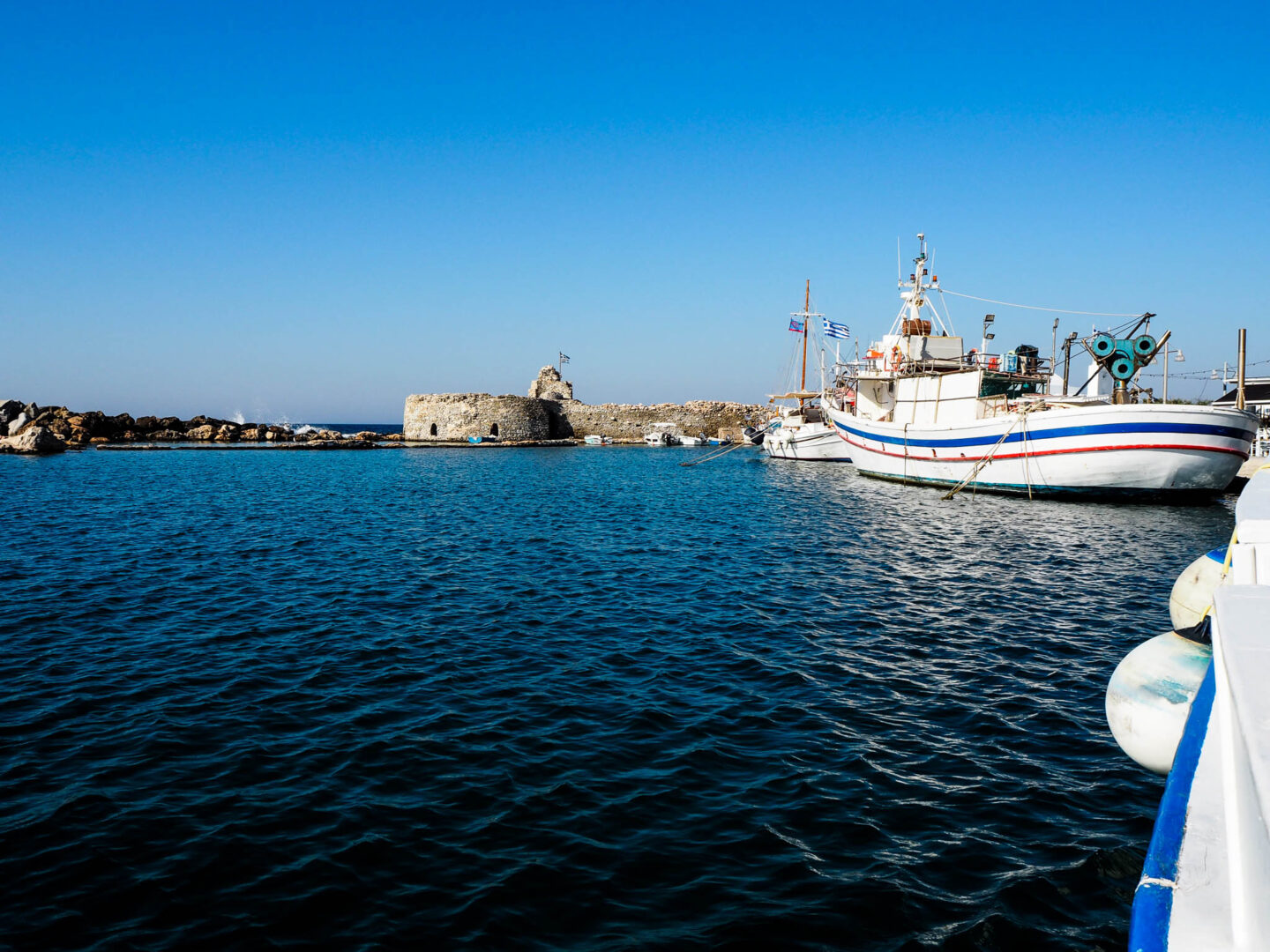
WHERE TO STAY IN PAROS: PARIKIA VS NAOUSA
When planning a trip to lovely Paros, one of the first things that will you need to decide is whether to stay in (or near) Parikia or Naousa. Naturally, you can chose to stay in neither of the two villages, but I will focus on these two for now.
I have visited Paros three times. Once when I was 19 years old, on a trip that my friends organised, and twice in recent years (most recent being last summer). One of the few things I remember about my first trip is how much I liked Naousa. Based on that, for my 2nd trip, I chose to stay in Naousa. As you may have noticed, I was not disappointed. It was as lovely as I remembered, if more so. For my 3rd trip to Paros, my fiancé and I did consider staying in Parikia, mix things up and explore more. However, Naousa’s appeal was too great to resist.
Speaking to both locals and foreign visitors, it seems that most visitors stay in Naousa. I thought I should mention this because I know that for some travellers this is a good sign whereas for others a deterrent. I should also note that in Naousa you will also find more high-end accommodation options than Parikia where there are more low-key hotels, guest houses etc.
THE VERDICT
All in all, I cannot discourage you from staying in Parikia, as I have personally not been there (well, I think I have been there on my first trip to Paros, but as I said previously, not a lot has been etched in my memory from that trip!). What I will confidently say is that if you do stay in Naousa, you won’t be disappointed (in fact, most people love it).
Nevertheless, while Paros is not the biggest of islands, it is still big enough for your accommodation location to impact how much of the island you will easily explore; Parikia is closer to everything in Paros. In any case, car hire and the number of days you have at your disposal will also weigh on the decision; I discuss both topics next.
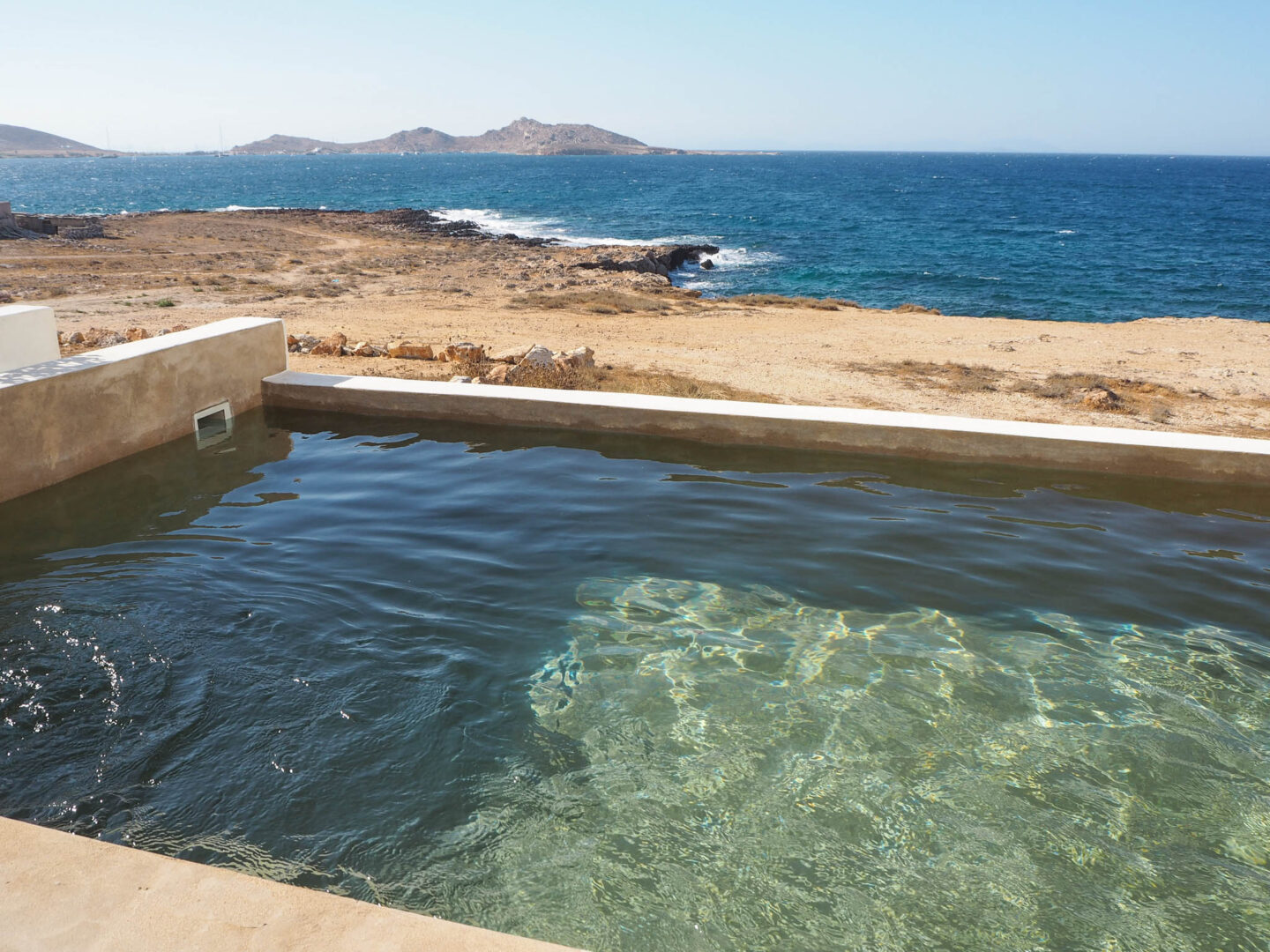
HOW TO GET AROUND PAROS?
DO I NEED TO RENT A CAR IN PAROS?
I am not a fan of long ‘commutes’ while travelling. Quite the opposite, I always recommend and try to practice slow travel. Therefore, even though Paros is large enough for car rental to make sense, there are still ways to get around without renting a car, if you do not wish to. Needing your own car in Paros depends on the kind of holiday you wish to have, the amount of days you will stay and the location of your accommodation.
If you are only visiting Paros for two to three days, you do not really need a car, though you could put it to good use if you do. If you stay in Naousa, you could easily visit beaches and sights by public transport. There are plenty of places just a quick bus / taxi / boat ride from Naousa. Same goes with Parikia. Needless to say that Naousa and Parikia themselves are small enough to explore on foot. They also offer plenty of restaurants, cafés and bars to keep you going for days.
However, if you are staying in Paros for a week or more, you will have enough time to explore the entire island. With quite a few towns / villages to visit and many beaches all around the perimeter of the island, it is worth considering renting a car. Moving long distances by taxi all the time might prove expensive and getting the bus twice or more per day could be tiring.

Driving times:
Parikia – Naousa: 20min
Naousa – Airport: 30min
Naousa – Chrisi Akti beach: 30min
In high season, driving times will most likely increase due to traffic.
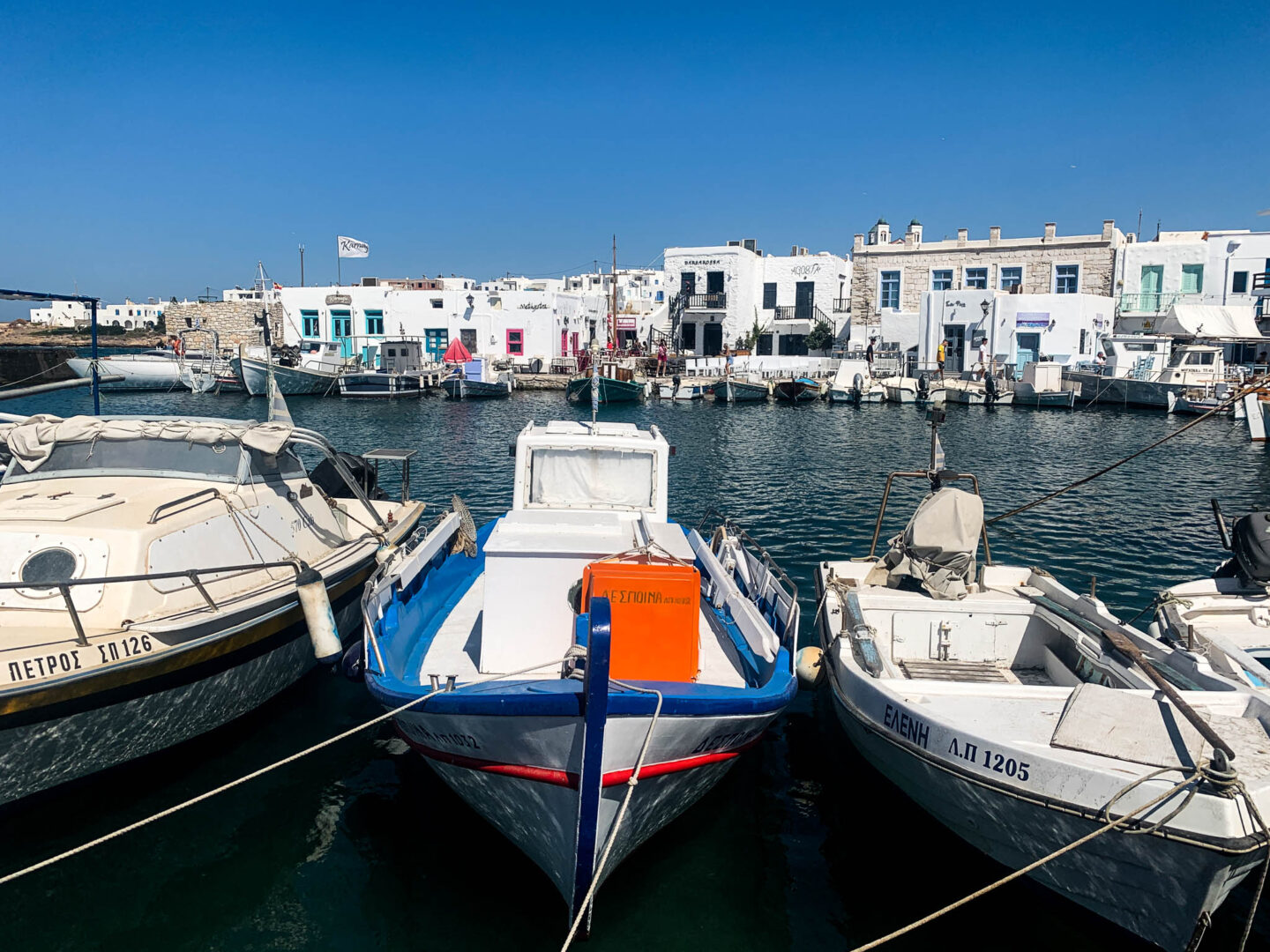
ABOUT PUBLIC TRANSPORT IN PAROS
The bus network is fairly extensive, so this is a great way of travelling around on the cheap. There are buses running fairly frequently between all major towns and villages, main beaches and the airport. You can find bus (known as KTEL) timetables and ticket information here. I travelled a couple of times by bus during high season; the bus was filled to capacity (and beyond!) but the service was punctual.
A fun and not too expensive way to get to the nearest beaches from both Parikia and Naousa are the local caiques. This is also a great way to admire the beautiful coastline and I would definitely recommend trying it! The service is fairly frequent; you can find the schedule and tickets in hard-to-miss spots in the port. At the time of writing, the return ticket from Naousa to Kolimpithres or Monastiri beach is 10€ per person.

A GREEK SUMMER EXPERIENCE: BOATS TO BEACHES
During the summer, nearly in every Greek island (and in many beach towns on the mainland), you will find boats that pick-up people from local ports and drop them off at various beaches nearby. These boats are not to be confused with tacky ‘party’ boats omnipresent in popular spots worldwide. Think of them more like water buses or water taxi ride-shares. They are usually owned and operated by fishermen and Greek visitors use them all the time too. Trips are quite short, the water is usually calm (since they stay near the shoreline) and the captain usually speaks English.
They are actually my preferred means of beach hopping in Greece as they are very pleasant and affordable. They also provide you with the opportunity to admire the coastline. I particularly love photographing seemingly inaccessible locations with tiny white chapels on, perched on cliffs or on tiny islets!
For larger groups, or if you prefer more privacy, water taxis (for individual hire) usually bob around in the port as well. Prices will vary.
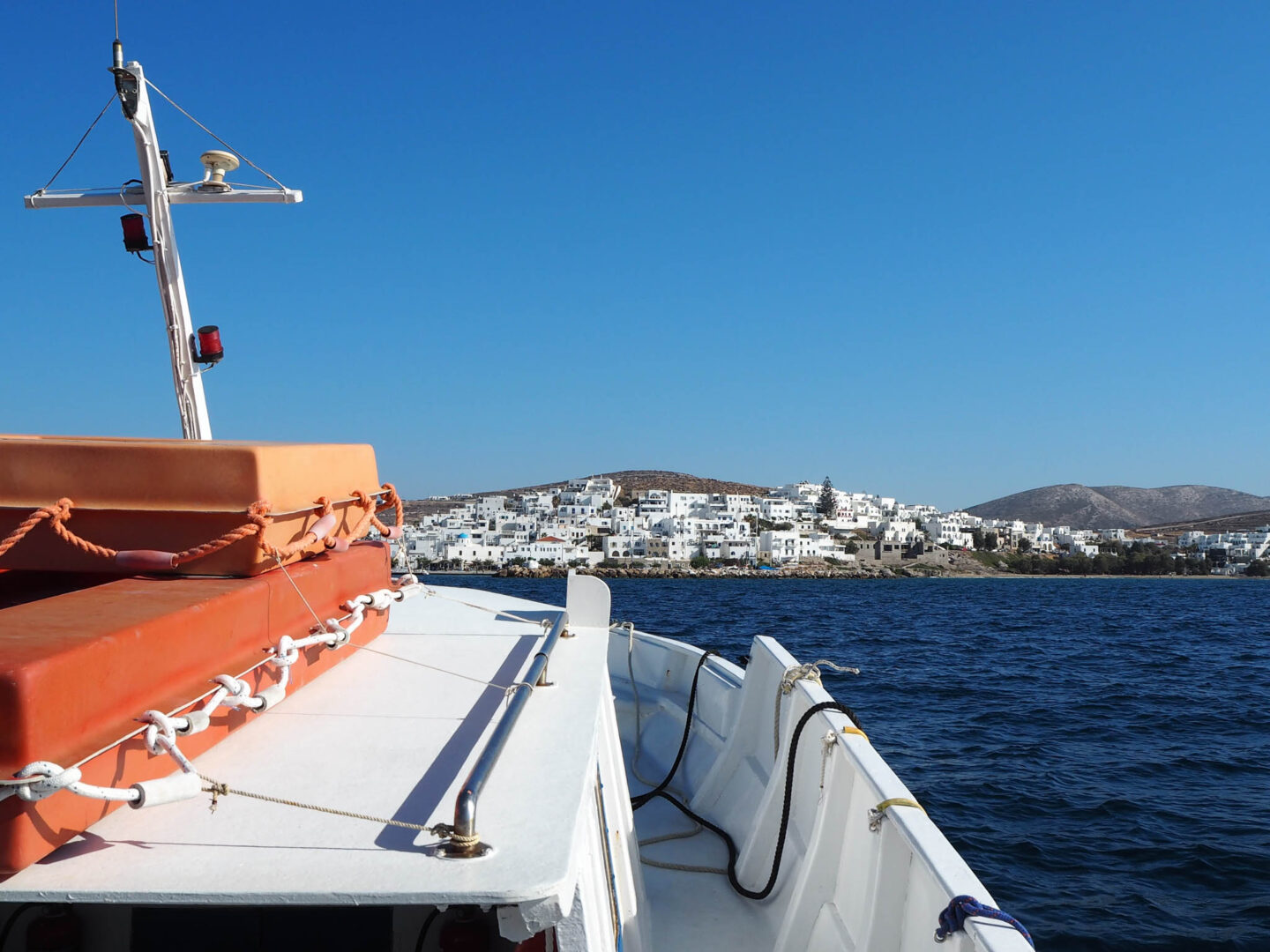
A FEW THINGS TO KNOW ABOUT TAXI HIRE IN PAROS
There is a good amount of taxis for hire in Paros, though in high season (July and August) you will need to pre-book; demand always surpasses supply.
Taxi rates in Paros are a bit higher than mainland Greece. The first time we visited Paros, we paid 30€ for the 30min ride from the airport to Naousa with traffic on the road (which is not unusual). Our second time in Paros, we paid a lot less for the same route; it was super early in the morning and we got there in no time.
During high season, when you arrive in Paros by boat, depending on the time of day, you may be unable to find an available taxi at the taxi rank. In the airport, the situation is a bit better, but still, we did not see too many taxis waiting around. Therefore, when it comes to time sensitive services such as airport and port pick ups or drop offs, I would definitely recommend booking in advance. Make the arrangements the day before, at the latest. Do not leave this to the last minute!
From my experience, booking taxis via the hotel always ended up with a significant mark-up, especially when it came to port or airport pick up. This happened to us with two different (and otherwise super nice) hotels and I have heard this from other people too. So, I would definitely recommend making your own taxi bookings.
PAROS TAXI COMPANIES
Making bookings by phone in a foreign country might sound intimidating, but in Paros, in particular, it’s not that bad. Phone numbers for the island taxis can be found here. I am sure you will be able to find an English speaking person on the other side of the line.
Furthermore, during my two visits to the island, I used the following private transfer companies:
Paros Taxi & MiniBus: tel / What’s Up: +30 6973434343
Get Ur Ride: www.geturride.gr
Note that I have no affiliation whatsoever with them; I was just happy with the service provided.
There are many small taxi companies around the island; if you find yourself in a taxi and you are happy with the service, ask for their card. In most cases, you will be able to phone them via What’s Up and communicate in English. During the day, we found that when we wanted to go to a beach or somewhere nearby, phoning about 30min before our desired time usually worked fine. However, as I mentioned previously, book time sensitive services in good time.
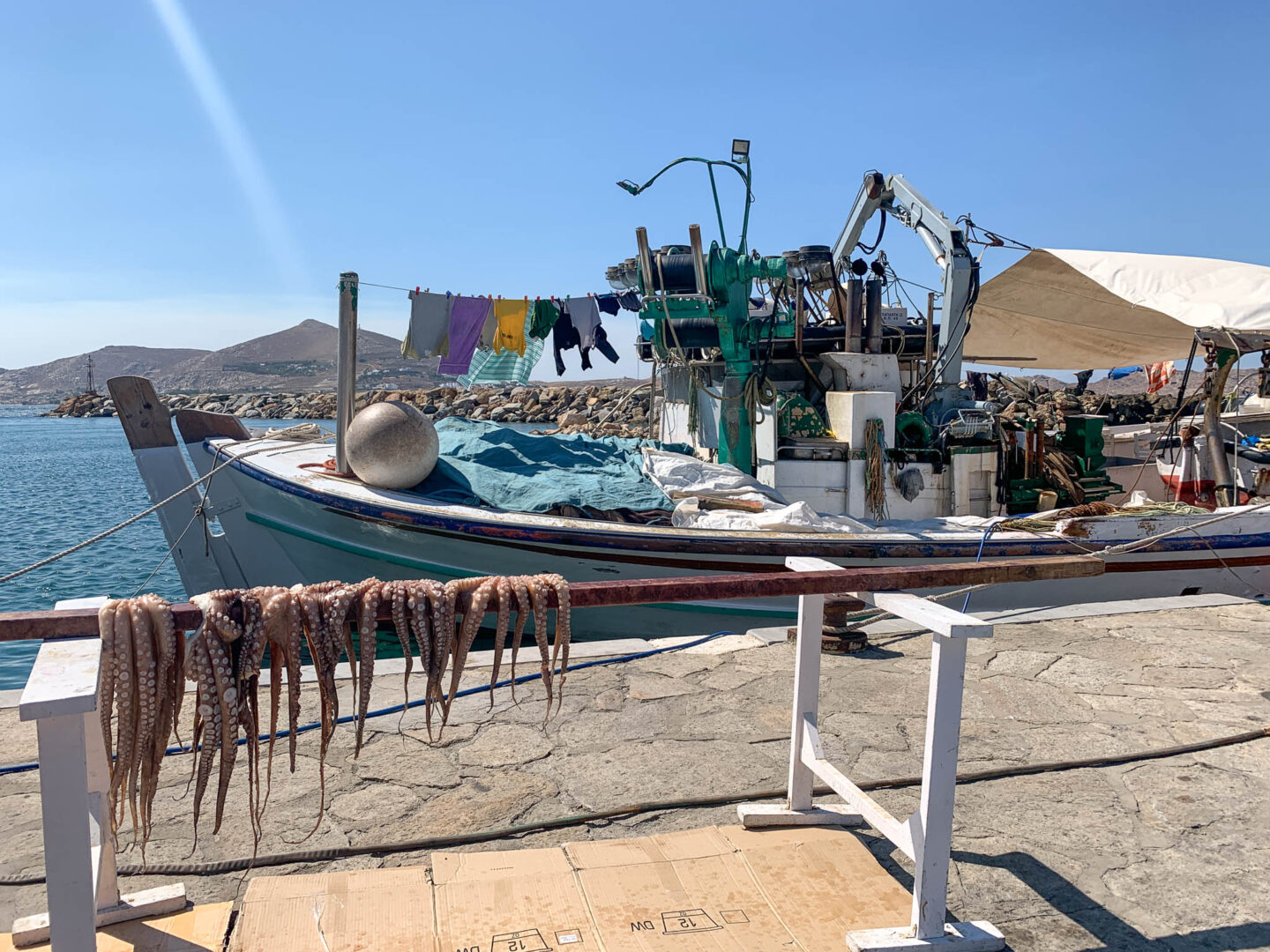
HOW MANY DAYS SHOULD I STAY IN PAROS?
With so many wonderful beaches and traditional villages to explore, you could easily spend two weeks in Paros, discovering the island in a relaxed way and spending plenty of time on the beach. Yet, given the number and variety of other stunning Cycladic islands close to Paros, I am sure you are tempted to keep travelling! I know that feeling well!
All in all, you can see most of Paros in a week. A week or so is enough time to visit a few of the most famous beaches, spend an afternoon in Lefkes and explore Naousa and Parikia in a relaxed manner, over breakfast or dinner and drinks.
Nevertheless, Paros is definitely worth visiting even if you don’t have a whole week at your disposal.
On that note, I would say that Naousa is the perfect ‘base of operations’ for a short visit to the island (say 3-5 days). You could focus on the north side of the island, visiting beaches nearby and spending every evening in the lovely town. If you are feeling more adventurous, you can also squeeze in a short visit to Lefkes, and maybe some time in a beach or two in the south side of the island.

HOW TO GET TO PAROS? ISLAND HOPPING TIPS & ITINERARIES
Paros is quite easy to get to, even from abroad. Paros’ small airport connects the island, via air, to the Greek mainland, more specifically Athens and Thessaloniki. If you are flying in from abroad, the easiest way to get to Paros is to fly to either of the two cities and, then, catch the 45min flight to Paros.
However, if flight timings don’t work, or you prefer a boat ride, you can catch the high speed catamaran (3h) or conventional boat (4-5h) from Piraeus (Athens’ main port).
Whether you arrive by air or sea in Paros, my blog post ‘Travelling to the Greek islands -Athens airport & ports FAQs‘ will probably come in handy.
ISLAND HOPPING FROM PAROS
The island’s central location in the Cyclades also enables quick boat connections with a multitude of islands. In fact, Paros is an ideal stop in your island hopping trip whether you use public ferries / catamarans or a private boat.
By far, the easiest island combo you can do is Paros and Antiparos. One can reach Antiparos island via a 10min(!) ferry ride from the port of Pounta, in the south of Paros or a 30min ferry from Parikia. So, you can easily visit Antiparos on a day trip. Nevertheless, the island does has a unique vibe and charm, so, it is worth considering spending a day or two (or more) there as well.
Other islands which are accessible within less than an hour from Paros are, to name a few, Naxos, Mykonos and Ios. During our first visit to Paros, we continued our journey to lovely Sifnos (1h) which, in turn, is the gateway to so many more Cycladic gems! On our second trip to Paros, we visited several of the Small Cyclades isles: Koufonisia, Irakleia & Schinousa. The sea is the limit!
READ MORE:
Paros island hopping: 5 extraordinary itineraries to easily do on your own
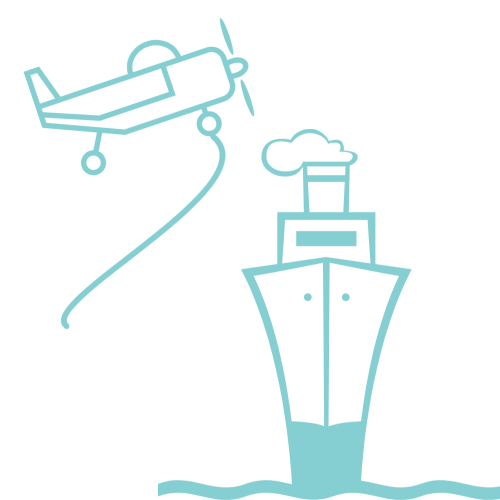
HOW TO BOOK BOAT / PLANE TICKETS TO THE GREEK ISLANDS
I am fully aware that for non-Greeks, checking itineraries and booking ferries or planes for the Greek islands may sound complicated and overwhelming. But that’s what I am here for!
I have explained all about boat services, planes routes and island hopping in the Cyclades and Dodecanese islands in the blog posts linked below. If you are travelling in July or August, I would recommend booking boat and plane tickets early -May at the latest. Most bookings can be made online.
PS. Transiting to the islands via Athens? Make sure to read all about Athens’ airport and ports and how to get from plane to boat and vice versa:
FINAL THOUGHTS -WHY VISIT PAROS?
Being a Greek expat in London, people ask me a lot about which Greek island they should visit. Though my answer does vary depending on who is asking the question, Paros almost always makes the list. With two lively traditional towns, numerous stunning beaches, plenty of appealing accommodation options, Paros is a crowd pleaser and it is quite easy to get to as well! No wonder why this little island has created serious competition for its much more famous neighbour, Mykonos…
So, don’t wait for too long, set sail for gleaming, ‘marblellous’ Paros, this summer.
This is not a sponsored post & I am not affiliated with any of the hotels, restaurants or organisations mentioned.
A DEEP DIVE INTO GREECE
Looking for more travel guides for Greece? Or maybe just tips, inspiration and practical advice for effortless travel and authentic experiences? Hit the buttons below!
___
